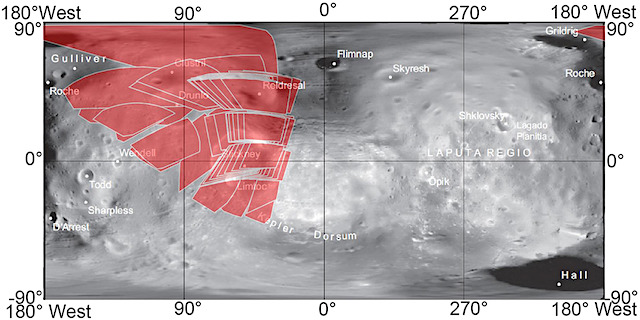 [Editor’s note: From a paper by Timothy Glotch and seven co-authors recently published in the Journal of Geophysical Research.]
[Editor’s note: From a paper by Timothy Glotch and seven co-authors recently published in the Journal of Geophysical Research.]
MGS‐TES Spectra Suggest a Basaltic Component in the Regolith of Phobos
• Mars Global Surveyor Thermal Emission Spectrometer spectra of Phobos have clear, diagnostic spectral features and are most consistent with a mixture of finely particulate basalt and phyllosilicates
• The Tagish Lake carbonaceous chondrite meteorite is a poor mid‐IR spectral analog for Phobos
• A basaltic composition for Phobos supports the impact model for Martian moon formation
The Martian moons Phobos and Deimos have been suggested to be captured asteroids based on the similarities between the dark, red, nearly featureless visible and near‐infrared spectra of these bodies and carbonaceous asteroids.
However, the capture hypothesis suffers from difficulties associated with the shapes and inclinations of the moons’ orbits. Alternatively, Phobos and Deimos have been suggested to originate from an impact with, or in the vicinity of, Mars.
In this work, we examine mid-infrared spectra of Phobos and compare them with spectra of different materials acquired in the laboratory under simulated airless body conditions.
We find that the mid‐IR spectra of Phobos are most consistent with the presence of a basaltic component, perhaps with admixed phyllosilicates. As the Martian crust is mostly composed of basaltic rocks, we suggest that Phobos (and likely Deimos) resulted from an impact with Mars. [More at link]








